The new contract signed until the summer of 2027 helps 21-year-old striker Bukayo Saka continue his journey of discovering his limits with Arsenal, where he has been with since the age of 8.
Just 7,751 Arsenal fans witnessed Saka’s first-team debut. On a freezing night in Kiev, Ukraine on 29 November 2018, Arsenal – and a select group of supporters – were at the Olimpiyskiy Stadium to play hosts Vorskla Poltava in the Europa League group stage.
With Arsenal leading 3-0 and certain of victory and a ticket to the knockout round with a game to spare, coach Unai Emery sent Saka on to replace Aaron Ramsey in the 68th minute. A few weeks after celebrating his 17th birthday, the young English player wearing the unfamiliar number 87 shirt almost made his mark with a goal.
Saka became the 862nd player to ever play for Arsenal’s first team and the 15th youngest player to make his debut for the club. But Saka’s Arsenal story didn’t begin that night in Kiev, but nearly 10 years earlier, when he joined the Hale End academy at the age of eight. Since then, the Ealing, London-born player’s career has been on an upward trajectory, making him one of the biggest stars at club and country.
Nothing happens overnight, as Saka's development is the result of hard work, desire, and professionalism from the player himself as well as those around him at the club. Moreover, at only 21 years old, time is certainly on Saka's side.
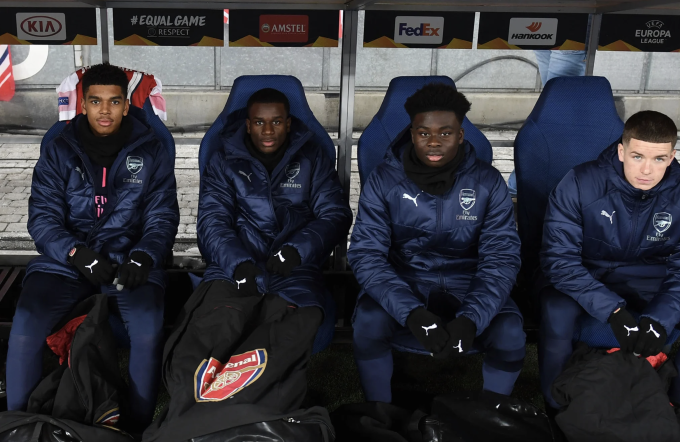
Saka (second from right) sits on the bench before coming on as a substitute and making his debut for Arsenal's first team against Vorskla Poltava in Kiev on November 29, 2018. Photo: arsenal.com
Saka is a product of the Hale End - Arsenal youth academy . After a short training and playing period to test his ability, he signed his first official contract with the club on 5 May 2010 at the age of eight, joining the youngest group at Hale End - the U9s. Emile Smith Rowe joined Arsenal the same month, despite being two years older, while Reiss Nelson, Joe Willock, Alex Iwobi and Ainsley Maitland-Niles were already in the academy.
"Even when Saka was very young and under 11, we had a pathway to look after him," said head of youth development Liam Brady. "The coaches and staff did a great job of scouting and then looking after these boys. I remember Saka at that age, very quick, very physical, very strong and as he got older he quickly added the football intelligence that was needed at the highest level. Not only did he score goals, he was involved in the play and linked up with everyone on the pitch. He was like the best player on the pitch, basically like he is now, scoring goals and assisting."
Liam Brady left his role as head of youth development in May 2014, when Luke Hobbs joined Arsenal from Southend United. Hobbs was part of the Under-14 coaching staff at the time, at the same time Saka was making his way up the ranks. “I joined the club in 2013 and I remember hearing Saka for the first time,” Hobbs says. “It was my first week at the club, and Roy Massey was speaking to Steve Leonard, who coached the Under-15s but was also in charge of the kit.”
At the time, Massey and Leonard worried that assigning Saka the No. 3 shirt might upset the youngster and his family, as the number was usually reserved for defensive players. But as Hobbs tells it, neither Saka nor his father Yemi cared about the number.
It didn’t take long for Hobbs – now Arsenal’s head of academy coaching – to understand why his colleagues Massey and Leonard were so vocal about Saka. He first coached Saka when he took Arsenal’s Under-12s into the Premier League futsal tournament – a five-on-five, indoor, high-touch affair. Hobbs took an open approach and didn’t put pressure on them to win at all costs. He gave all 10 players a chance, with five starting the first half and five starting the second. Hobbs kept this approach and formation going until the final against Chelsea.
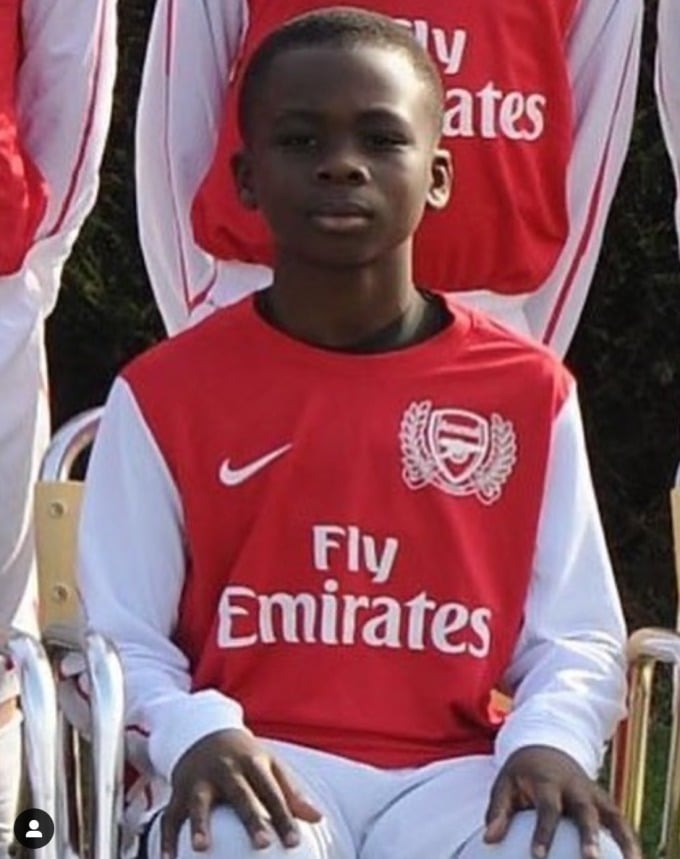
Saka when he was playing for Arsenal's youth team.
"I put Saka's team in first, and took them off at half-time when we were winning," Hobbs explains. "Chelsea were obviously a strong team and had equalised at 3-3. I remember thinking, 'If you want to win, bring Saka on'. So, whether my method was right or wrong, I brought Saka on, and he scored to make it 4-3, then 5-3, then he hit the top corner, 6-3. They couldn't get the ball off Saka, and we lifted the Cup and had a great comeback. I remember that moment very clearly. Even though he helped the team win, Saka wasn't arrogant."
The following season, as a member of the Under-13s, Saka began to gain experience in a variety of positions, primarily at left-back – something that proved useful in his early days in the first team, some six years later. By then, Saka was regularly promoted to the senior side – Hobbs’ Under-14s – to continue his progression and development. The coaching staff were also not shy about testing Saka’s abilities, once playing him at left-back in an 11-a-side game at Wembley.
When Hobbs discussed Saka playing at full-back and playing with the older players, Yemi was always happy to oblige. And the extra-level games continued to help Saka improve. As a full-back, Saka received plenty of the ball, was always bold in running into space and became the team’s first attacking threat on the left flank, even when faced with older players. Saka’s first major achievement in this role was winning the 2015 Nike Trophy at Wembley, where he played at left-back in the final, helping Arsenal beat Reading 1-0.
In 2018, at the age of 16, Saka's journey at the Hale End academy ended. Saka and 11 other young players were offered full scholarships to the club to train and compete at London Colney - Arsenal's headquarters. Saka's family happily agreed to this offer, and they did not go through any agents, but only let father Yemi talk to the club. "As Arsenal's top talent at the U15 level, he certainly had many offers from other clubs. But Saka's family always kept calm. I think that was an important part of Saka's journey. He was a great kid. Whenever we took Saka away or abroad, we never had any problems. He was always very humble," Hobbs said.
With eight years at Hale End and a meteoric rise, Saka is seen as the epitome of the strong Gunners Arsenal strive to create at their academy . "Saka inspires everyone, from the staff to the young players, to be better. Saka inspires not only what he does on the pitch, but also his behaviour and what he does in the community. It's great that we can show the families of our young players Saka's path as an example of what we stand for, which is creating strong young Gunners," said Academy Director Per Mertesacker.
The former Germany centre-back also admires the way Saka copes with the pressure of playing at the top level. Mertesacker said: "He is overcoming all these challenges, with everything that happens around him. Saka knows how to seize the opportunity even though he is knocked down sometimes, misses a penalty, knows how to deal with racism and online abuse. Saka overcomes all these challenges and that is typical of the strong young Gunners. He is an inspiration for us."
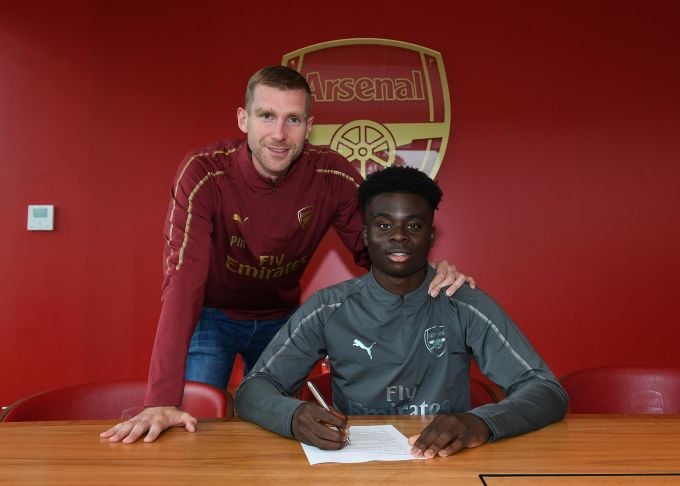
Mertesacker witnessed Saka sign a professional contract with Arsenal on September 14, 2018, when the striker was just 17 years old. Photo: arsenal.com
From Hale End to London Colney, and soon promoted to the first team, Saka made his debut while still a schoolboy. The 2001-born player started the following season by scoring his first goal for Arsenal in a Europa League match against Eintracht Frankfurt in September 2019. That was certainly a special day, but what Saka did next was even more special.
"What tells you everything about Saka is what he did with his shirt from that breakthrough game against Frankfurt," Mertesacker said. "The next day, Saka brought it back to Hale End and gave it to us as a gift. A meaningful shirt, marking the moment Saka scored his first goal, and he brought it back to us, where it all started. It's on display in the entrance hall for everyone to see. That's Saka, he never forgets the people who were part of his story, respecting the journey he's been on."
Before that landmark match against Frankfurt, Saka had taken his first steps into professional football at the start of the 2018-19 season. A new era had begun at the Emirates Stadium. Arsene Wenger left in the summer of 2018 after 22 years in charge, and Unai Emery took over as the club’s first new manager of the 21st century. The academy was also changing, with Mertesacker appointed as director and Freddie Ljungberg as head coach of the under-23s. The Swede had previously coached Arsenal’s under-15s and under-19s, working directly with Saka.
"When Ljungberg appointed him as Under-15 manager, he showed a lot of faith in Saka," Hobbs recalls. "That helped Saka when he first went to London Colney to train full-time. Ljungberg knew Saka's style and that certainly helped his transition from schoolboy to Under-23. Ljungberg also had a good relationship with Emery, which also helped Saka's progression."
Emery initially only gave Emile Smith Rowe a chance to debut in the Europa League group stage. It was not until the fifth round, when he had a big advantage in winning the top spot, that Emery took a closer look at the academy generation and for the first time included Saka in the UEFA registration list to go to Ukraine to play Vorskla Poltava. And the young English talent took full advantage of this opportunity to impress the first-team coach.
In the 68th minute of that match at the Olimpiyskiy Stadium on 29 November 2018, Saka came on, and at 17 years and 86 days, he became the 15th youngest player in Arsenal's history to make his first-team debut. The size of the tournament, the newness of the first team and the -14C cold that day could not stop Saka from shining. Six minutes after coming on, Saka ran on the left wing and received the ball from Mohamed Elneny's long pass. The boy controlled it neatly, dribbled past the Vorskla Poltava defender and shot with his strong left foot towards the near corner, but the goalkeeper blocked it. Saka also left his mark with an assist for Joe Willock.
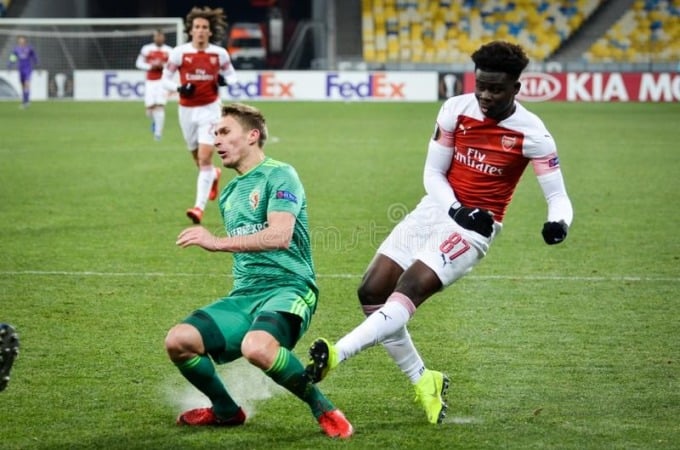
Saka during his Arsenal first-team debut at the Olimpiyskiy Stadium, Kiev on November 29, 2018. Photo: Dreamstime
But Saka has not only impressed on the pitch . Football has consumed a lot of his time since he was a child, but Saka has not traded it for anything else, least of all his studies. Born on September 5, Saka was one of the oldest in his year, and he went on to attend Greenford High School when he joined Hale End. According to Matt Henly, head of education at Arsenal's academy for 10 years and followed Saka closely through his high school years, he is as serious about his studies, always giving 100% effort as he is about his football. "Saka took his GCSEs in 2018 and finished top of his group, despite having a lot of smart kids in the team," Henly said.
What made Saka's results even more remarkable was the timing of his final exams. "In 2018, the European Under-17 Championships were held, and they were held at the same time as the exams. It was a nightmare for the boys," Matt explains. "Saka was lucky that England were hosting the tournament that year, so he could study at school, rather than going abroad or studying in hotels. Some players had their exams rescheduled for different times, but Saka spent that time travelling between London and St George's Park, between taking exams and playing for the national team. That made his results even more remarkable."
So how did the highest-paid player at the Emirates get his grades? "Well, Saka's group had a mixture of the old letter grades and the current numbered system, depending on the subject. And Saka got an A* - the highest grade - in both business and economics, and all other subjects were A or A*, using the equivalent system," Matt revealed.
But intelligence, talent and a desire to contribute were not enough for Saka to make it in football – a sport that requires a lot of strength and physicality. Dr Gary O'Driscoll, Arsenal's head of sports medicine, joined the club around a year after Saka broke into the first team. Since then, he has watched the winger grow incredibly in stature, but he says there is no secret to Saka's impressive physical development.
"Saka wasn't bigger, stronger or more powerful when he came into the first team, and we didn't turn him into a machine. Saka was fouled the most in the Premier League, but he adapted physically to deal with it. As well as his physical development, Saka was also open to learning, doing what we asked him to do. If we asked him to improve his bench press, add some strength or improve his core, he would do it. Not every player can do that, no matter how hard they try," O'Driscoll said.
How Saka has changed over the years at Arsenal.
As O'Driscoll points out, Saka is one of the most fouled players in the Premier League. Over the last three seasons, only five players have won more free-kicks than the England winger. But Saka rarely misses a game. Before the final round of fixtures this weekend, he had played 79 consecutive Premier League games, making more appearances than any other Arsenal player in the past three years. No player at any club has played as many Premier League games since the start of last season.
O'Driscoll and his staff have never had trouble encouraging Saka to push himself beyond his physical limits. "When we say to Saka, 'You're going to play 90 minutes two games out of three a week, can you do it?' Saka not only says he can do it, but he thrives on the challenge and his body allows him to do it. Not many players have that," he says.
According to Arsenal's head of sports medicine, Saka is not the type of player who is the first to arrive at training and the last to leave each day, but is always professional and gives his best every moment of training. "He is driven, competitive and trains to win. Saka follows a strict training plan, from lifting weights in the gym to preparing, training on the pitch, recovering, then going home and going to bed early. He is a unique player with a dedicated personality, and his journey with football can continue for a long time," O'Driscoll added.
But Saka’s journey has only just begun. The England midfielder only turns 22 at the start of next season, and there are many challenges ahead. Saka is close to reaching 200 appearances, is the team’s top scorer with 37 goals and also leads the way in assists with 37. He is therefore expected to shine even brighter in the Champions League – a competition Arsenal will return to next season, after a year’s absence.
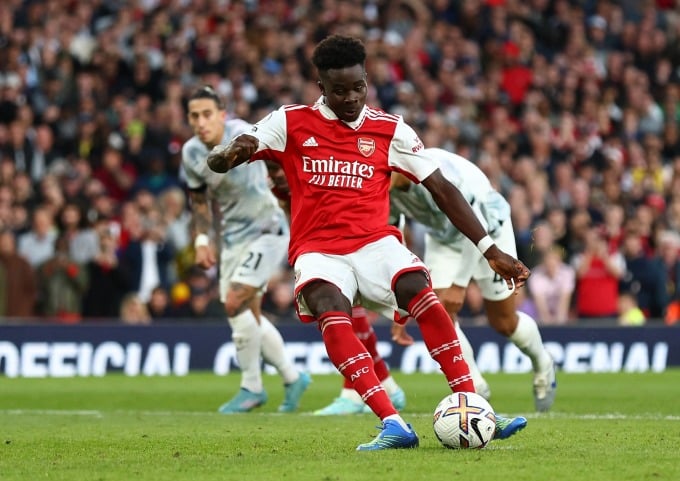
Saka scored a penalty to help Arsenal beat Liverpool 3-2 at Emirates Stadium in the Premier League on October 9, 2022. Photo: Reuters
"Saka is a fantastic player and he seems to be getting better all the time," said Liam Brady, who also wore the Arsenal No. 7 shirt. "Saka has been at the top level since he was very young, had a great season and is one of the main reasons why the club is doing so well. I can't wait to see him in the Champions League next season. That's the level Saka should be playing at and he can absolutely shine in that competition."
From a physiological perspective, O'Driscoll agrees with this expectation: "The amazing thing is that we don't know what Saka's limits are. He's only 21, he still has a lot of potential, and Mikel Arteta is very aware of this. It's rare to have a player who combines will, ambition and drive with physical potential that we don't know the limits of. What he has achieved could just be the beginning."
Hong Duy (according to arsenal.com )
Source link


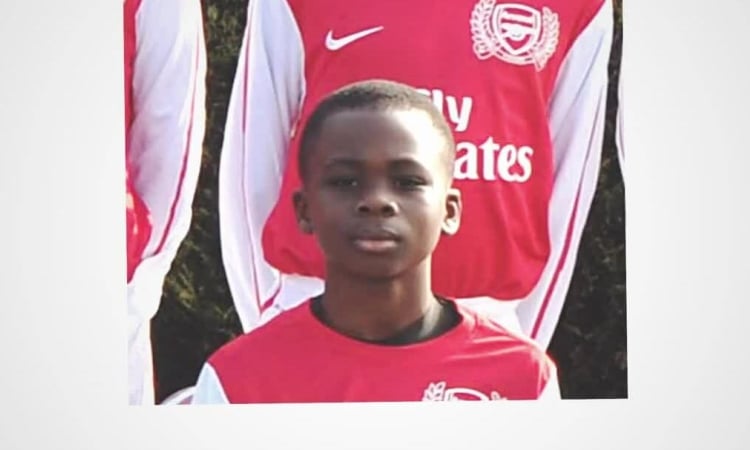



![[Photo] Overcoming all difficulties, speeding up construction progress of Hoa Binh Hydropower Plant Expansion Project](https://vstatic.vietnam.vn/vietnam/resource/IMAGE/2025/4/12/bff04b551e98484c84d74c8faa3526e0)

![[Photo] Closing of the 11th Conference of the 13th Central Committee of the Communist Party of Vietnam](https://vstatic.vietnam.vn/vietnam/resource/IMAGE/2025/4/12/114b57fe6e9b4814a5ddfacf6dfe5b7f)
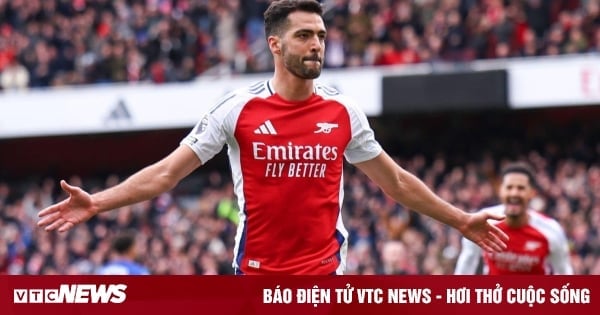

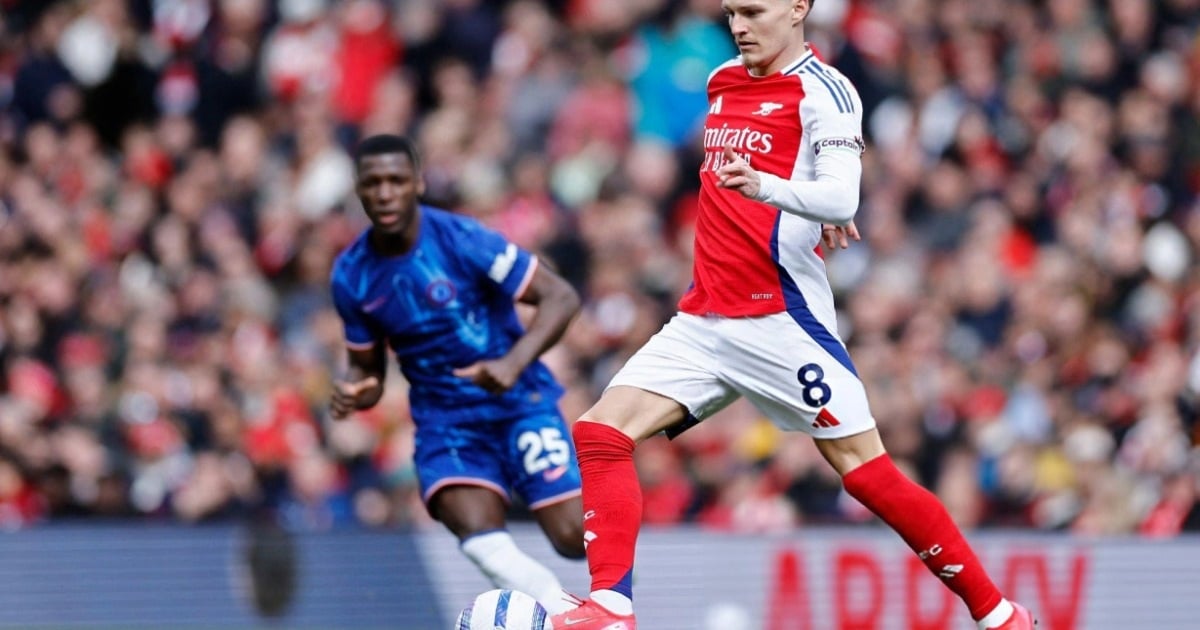

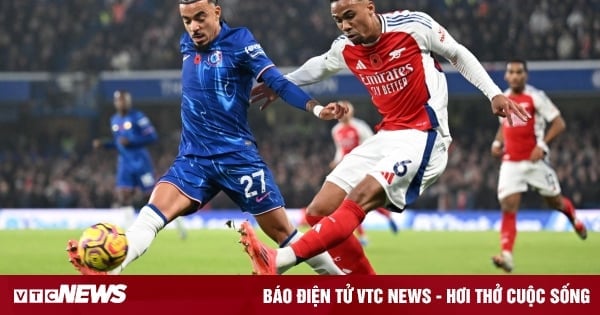

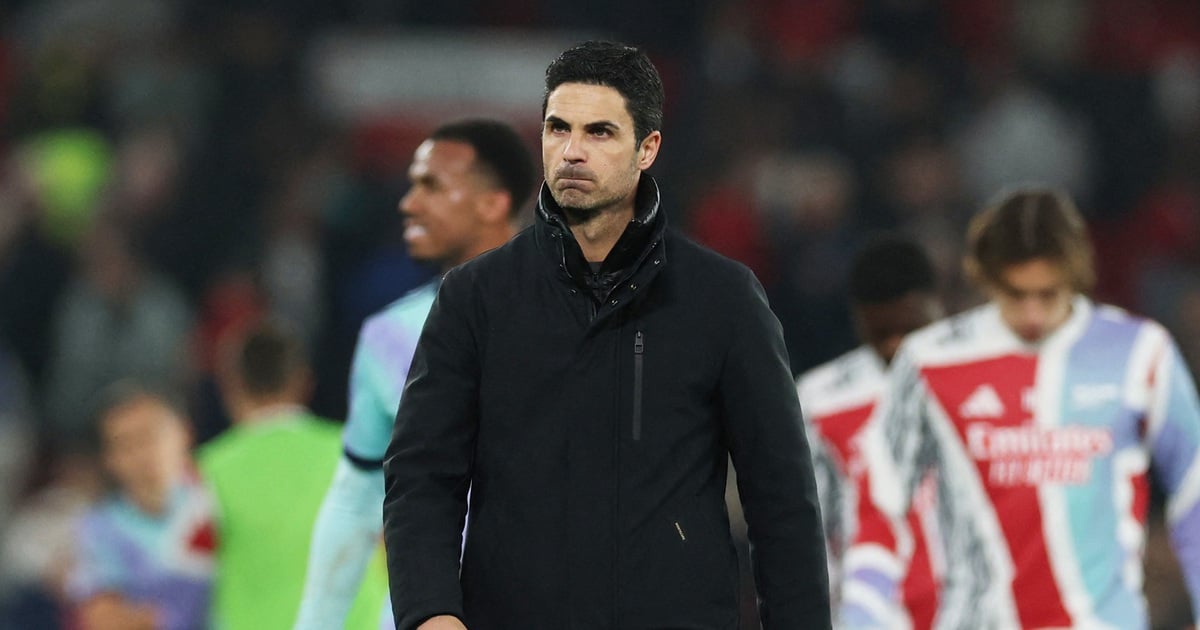

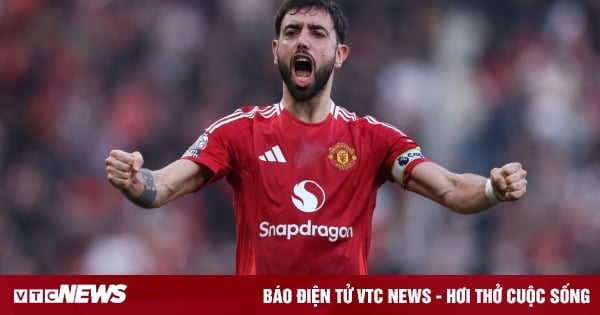

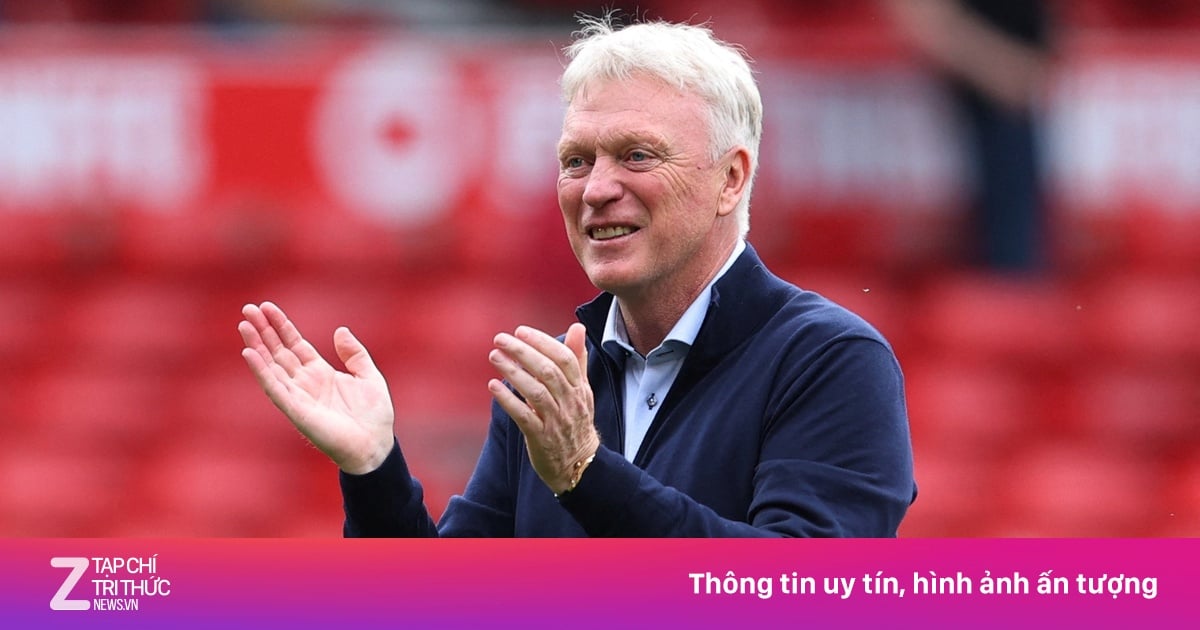
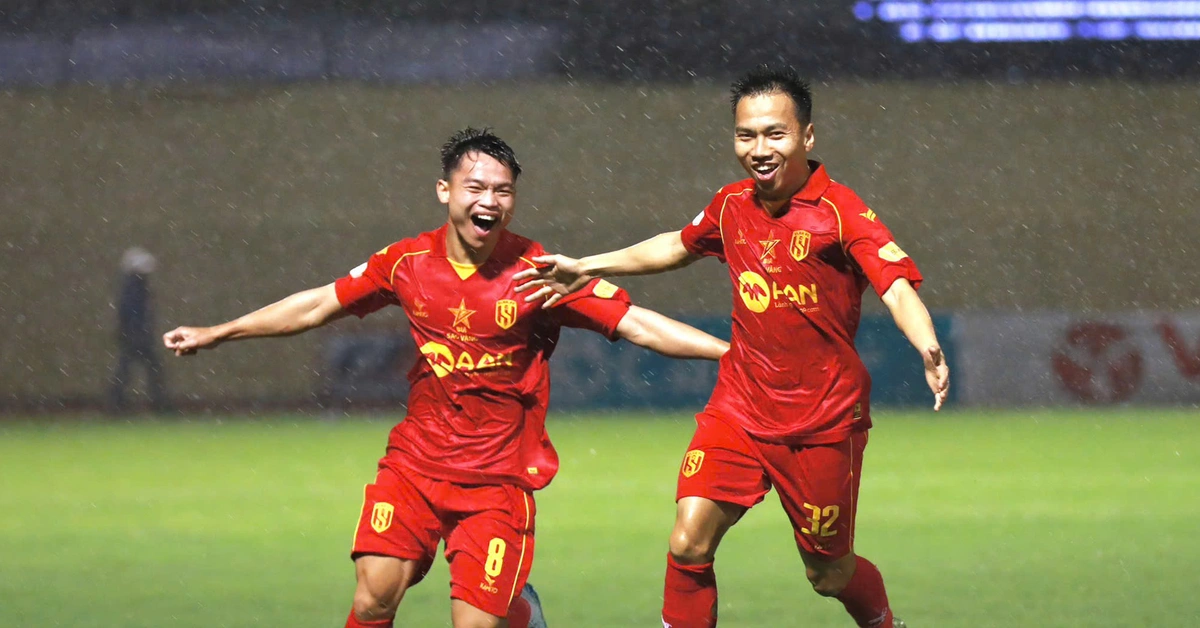
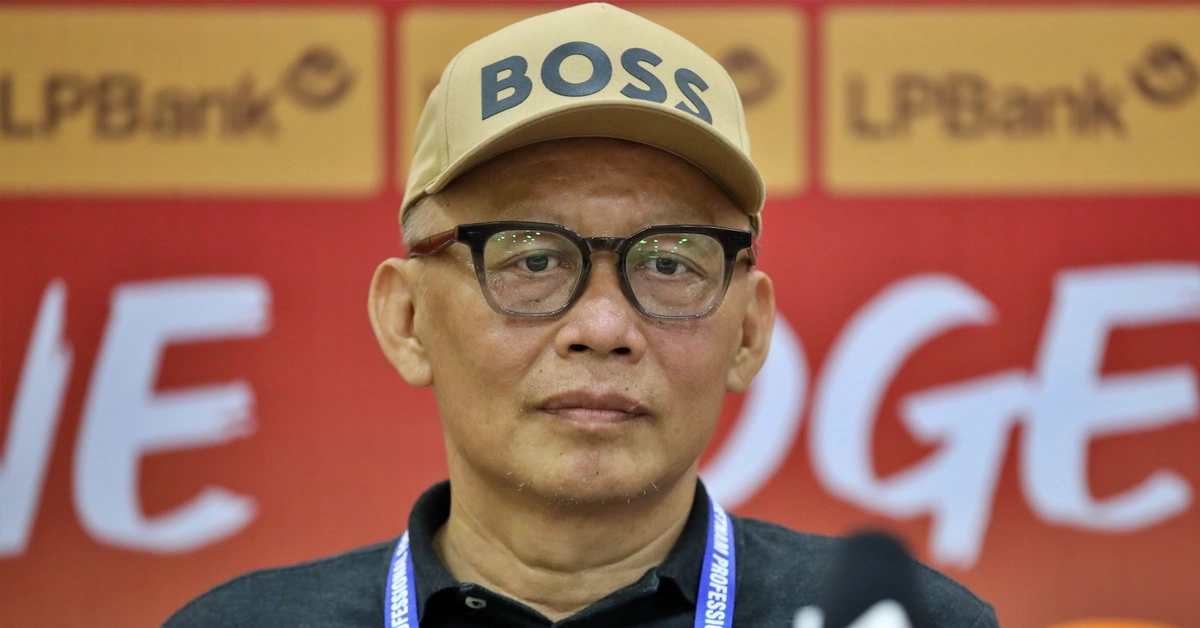
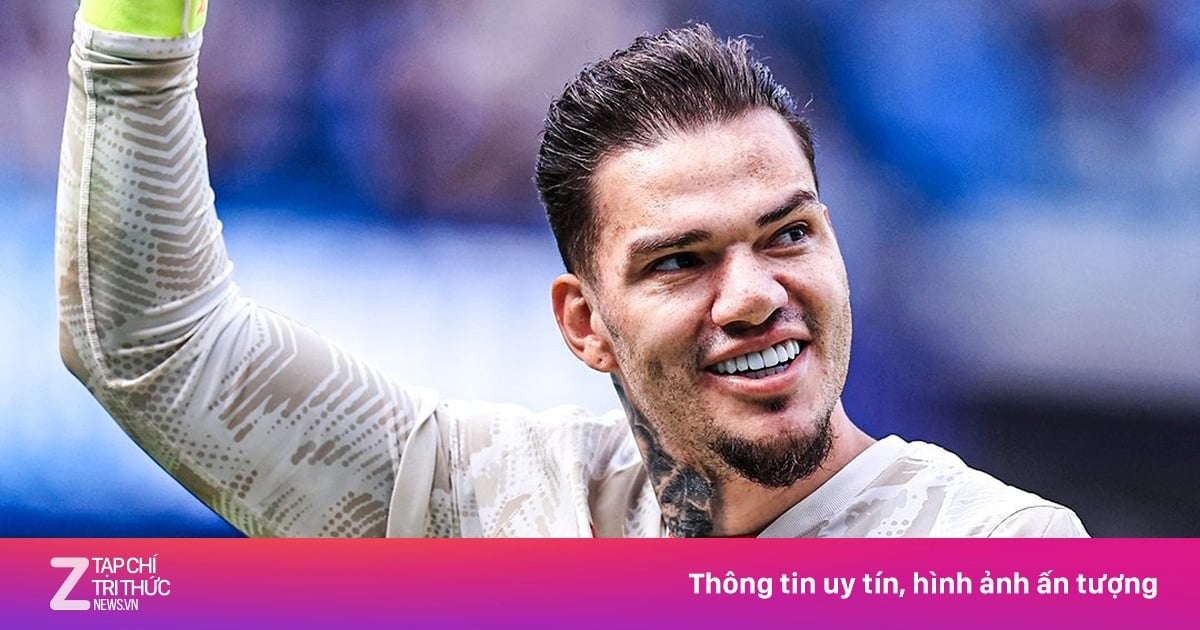
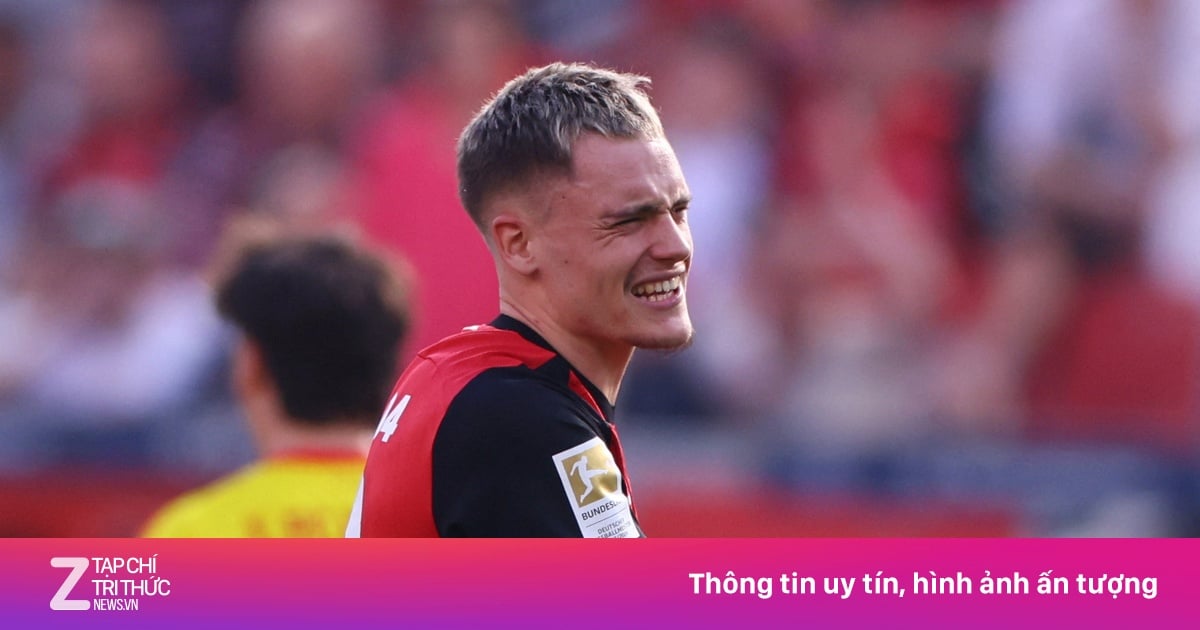






















































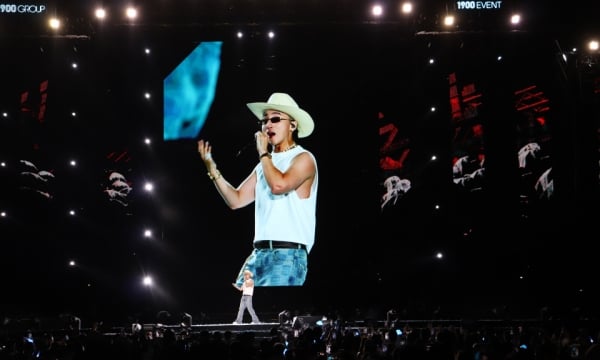

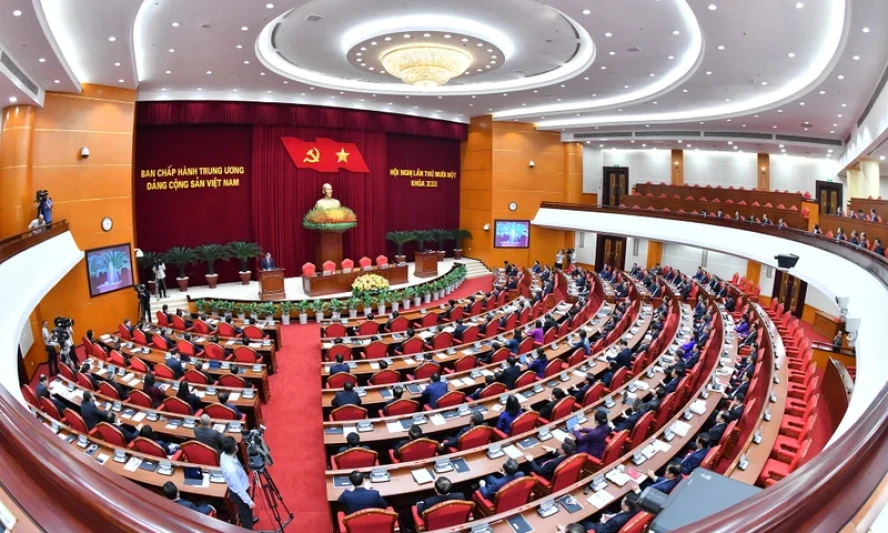
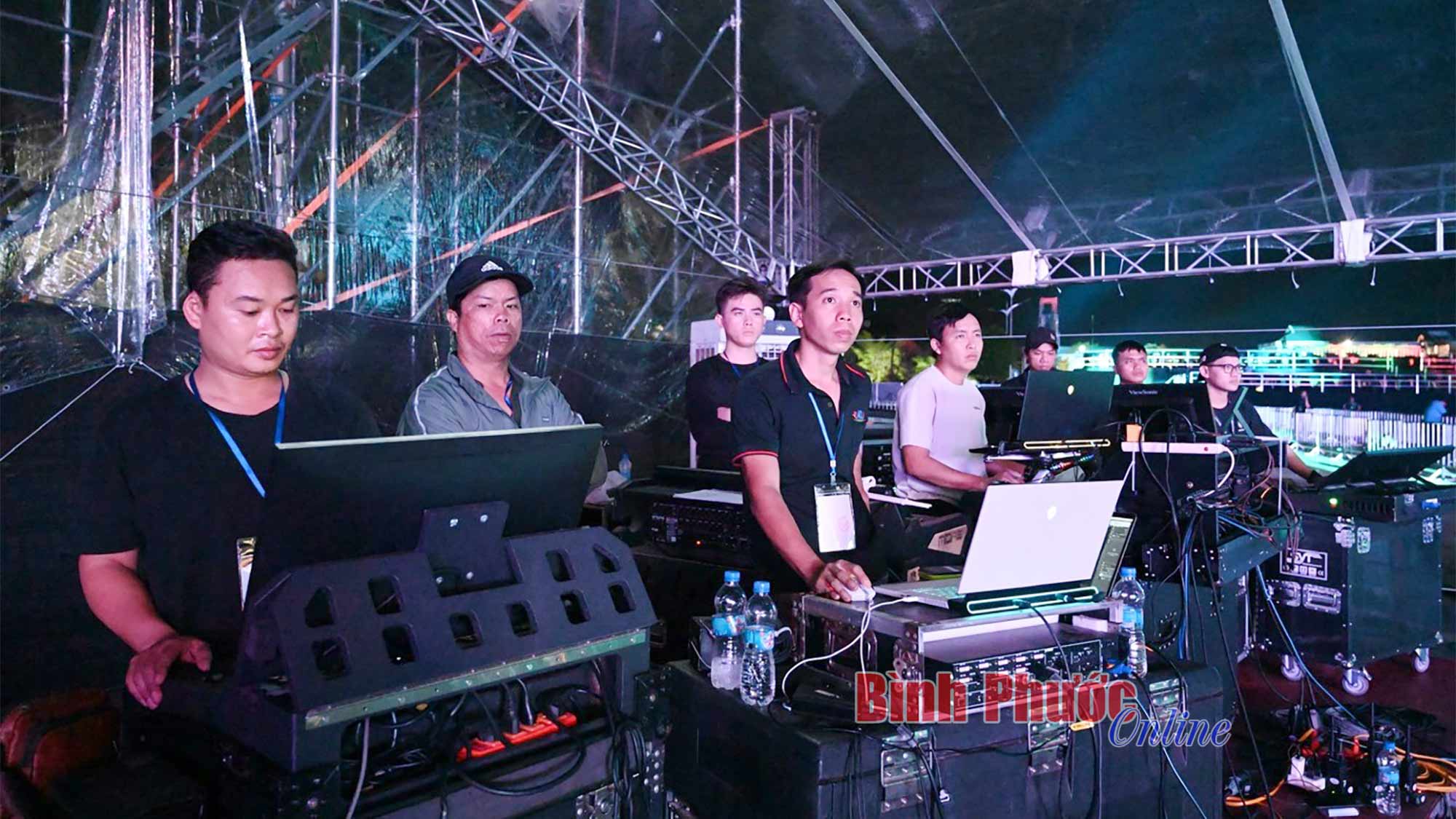















Comment (0)